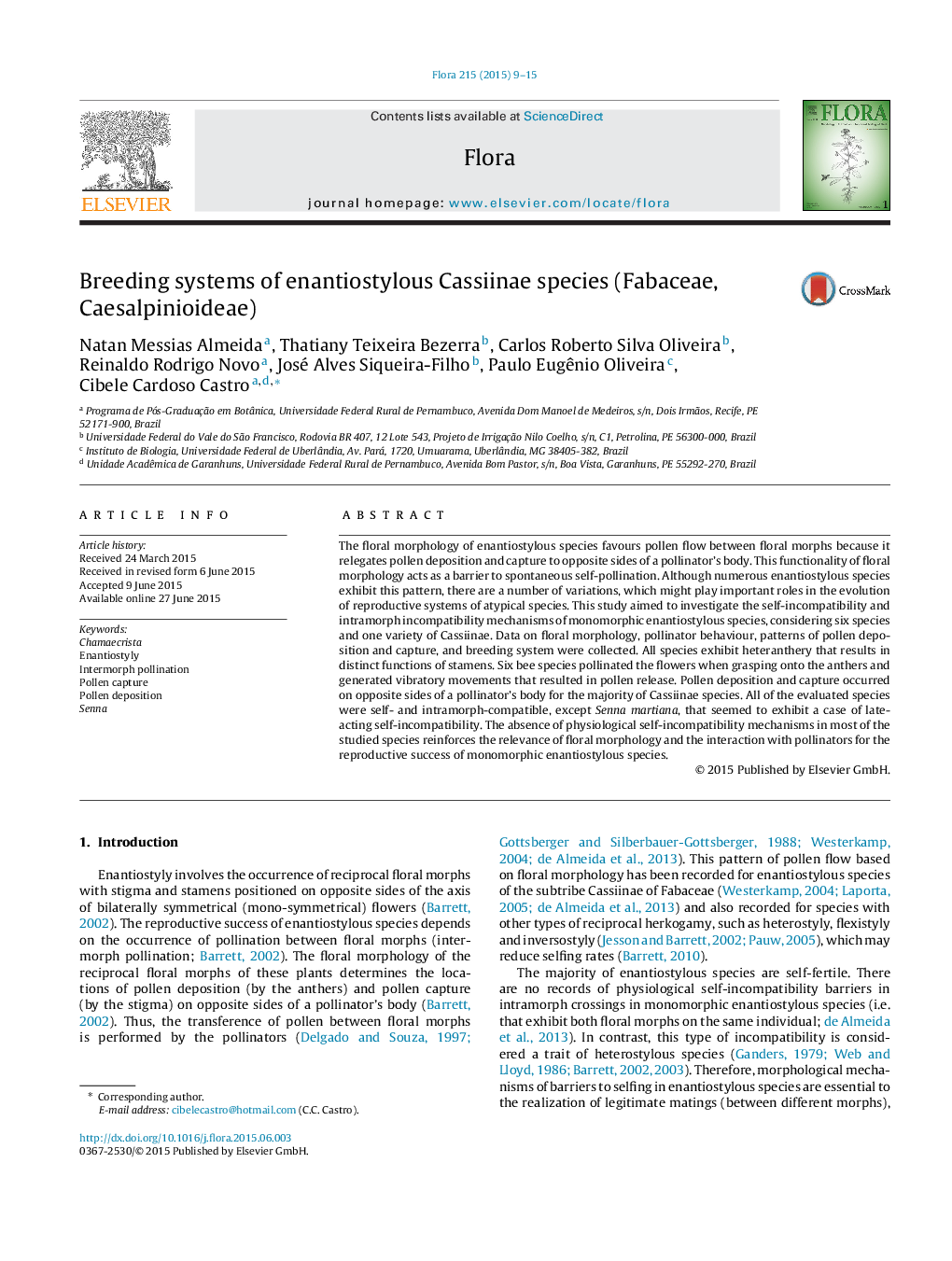| Article ID | Journal | Published Year | Pages | File Type |
|---|---|---|---|---|
| 8470327 | Flora - Morphology, Distribution, Functional Ecology of Plants | 2015 | 7 Pages |
Abstract
The floral morphology of enantiostylous species favours pollen flow between floral morphs because it relegates pollen deposition and capture to opposite sides of a pollinator's body. This functionality of floral morphology acts as a barrier to spontaneous self-pollination. Although numerous enantiostylous species exhibit this pattern, there are a number of variations, which might play important roles in the evolution of reproductive systems of atypical species. This study aimed to investigate the self-incompatibility and intramorph incompatibility mechanisms of monomorphic enantiostylous species, considering six species and one variety of Cassiinae. Data on floral morphology, pollinator behaviour, patterns of pollen deposition and capture, and breeding system were collected. All species exhibit heteranthery that results in distinct functions of stamens. Six bee species pollinated the flowers when grasping onto the anthers and generated vibratory movements that resulted in pollen release. Pollen deposition and capture occurred on opposite sides of a pollinator's body for the majority of Cassiinae species. All of the evaluated species were self- and intramorph-compatible, except Senna martiana, that seemed to exhibit a case of late-acting self-incompatibility. The absence of physiological self-incompatibility mechanisms in most of the studied species reinforces the relevance of floral morphology and the interaction with pollinators for the reproductive success of monomorphic enantiostylous species.
Keywords
Related Topics
Life Sciences
Agricultural and Biological Sciences
Ecology, Evolution, Behavior and Systematics
Authors
Natan Messias Almeida, Thatiany Teixeira Bezerra, Carlos Roberto Silva Oliveira, Reinaldo Rodrigo Novo, José Alves Siqueira-Filho, Paulo Eugênio Oliveira, Cibele Cardoso Castro,
